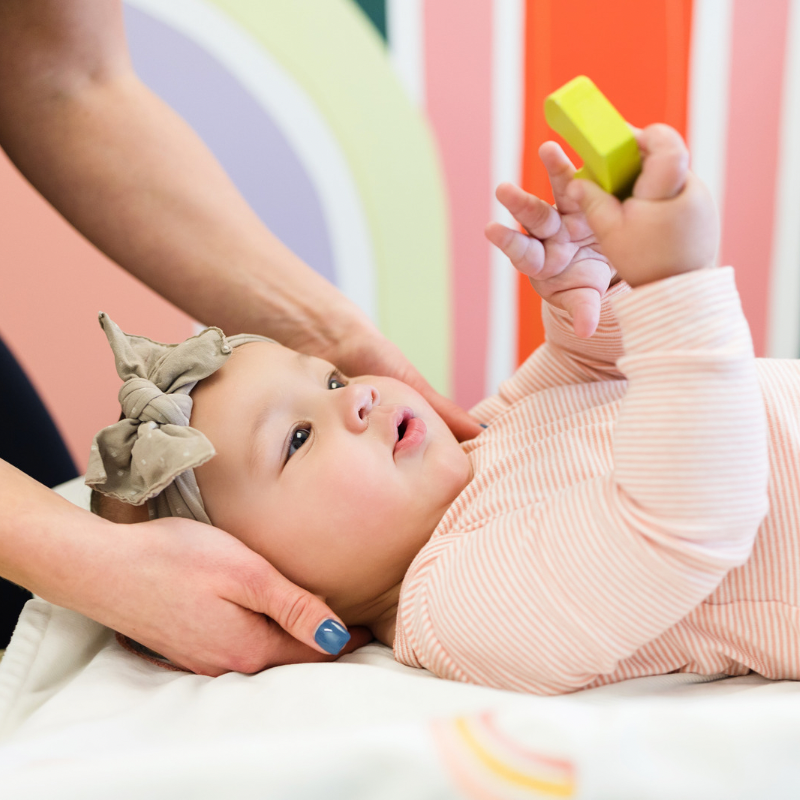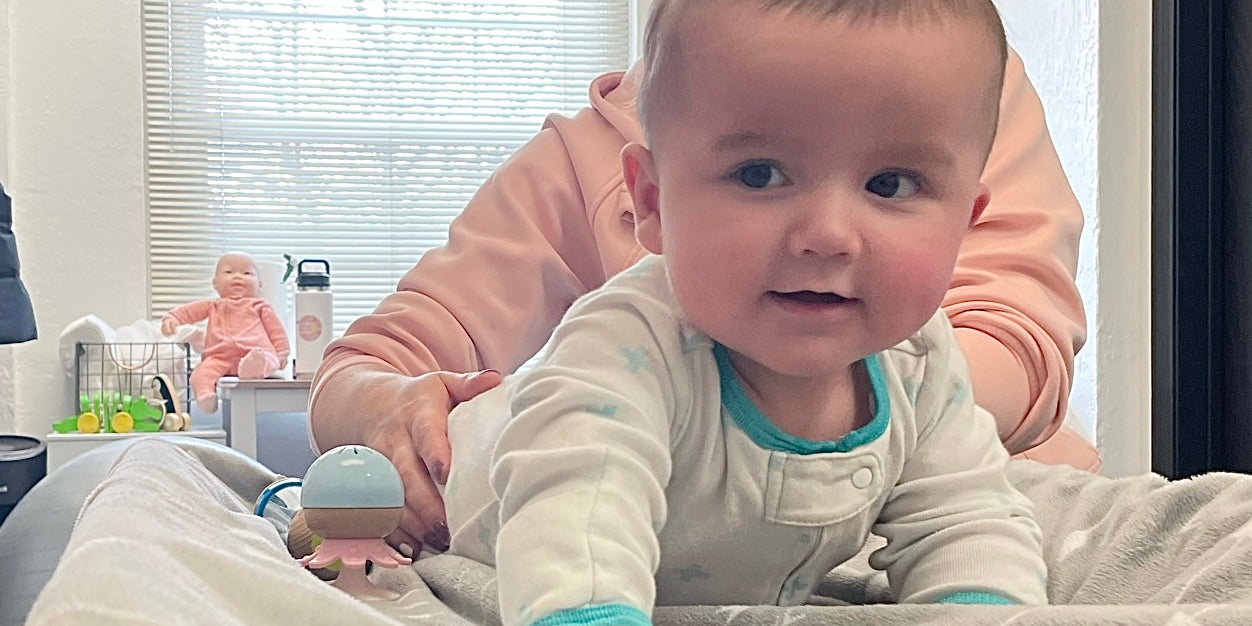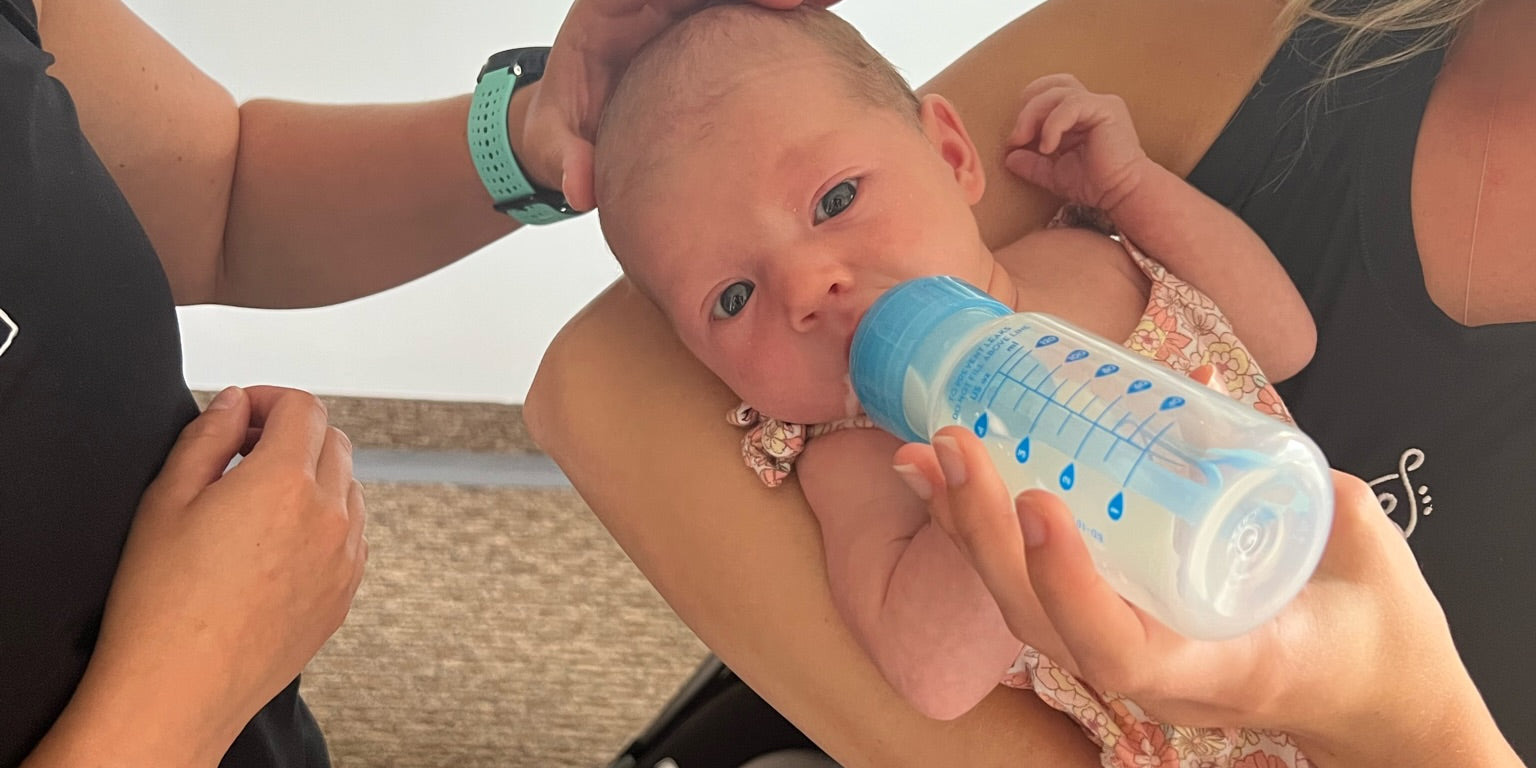Torticollis is one of the most common musculoskeletal conditions in newborns! This condition is closely related to spinal restrictions and muscle tightness [our SPECIALTY as baby chiropractors]. Learn the signs of baby torticollis, how we treat torticollis in babies, & helpful baby stretches!
Torticollis in Newborns
Torticollis is the third most common musculoskeletal condition in newborns. The condition is caused by contracted muscles on one side of the neck that result in a twisted neck. Typically, newborn torticollis is due to the shortening and tightening of the sternocleidomastoid [SCM] and/or upper trapezius muscles [image below]. Having tight neck muscles can lead to secondary conditions like plagiocephaly [flat spots] and colic. Not to mention the functional challenges babe can face with basic activities like breastfeeding.
What causes torticollis in babies? For one, birth is physically demanding for everyone involved, regardless of how the baby was born! Uterine positioning, like breech babies, can play a role in newborn torticollis. Twins are also more susceptible to torticollis since they share space from the get go. Birth, in general, also presents stressors to babes! Extra stress may look like labors that are very fast or incredibly long. During delivery, it is sometimes necessary for providers to use their hands or tools like a vaccum or forceps to guide baby out. These types of difficult deliveries can cause strain to the newborn’s neck resulting in a ‘stuck’ head position— aka torticollis.
Toddlers can also experience torticollis. This is especially common with upper respiratory infections and other inflammatory processes. With respiratory infections, infants are often tense, battling coughs, and breathing differently with their immature muscles.

Signs of Torticollis in Babies:
- HALLMARK SIGN: fixed head position, rotated to one side and/or tilted head
- Head position preference— difficulty turning/looking one direction
- Troubles breast feeding — favoring one breast or specific positions.
- Reaching or only using one arm
- Flat spots on the skull or plagiocephaly
- Neck mass [from contracted SCM]
- Fussy or Irritable
- Signs of Unresolved Torticollis : atypical crawling, asymmetrical trunk/shoulders, redness/irritation, difficulty weight bearing through arms.
How to Treat Torticollis in Babies
Watch this video to better understand your baby’s torticollis and learn AT HOME baby stretches for torticollis and head position preference.
Baby Torticollis Stretches
The two main problem muscles with this condition are the SCM and upper trapezius muscles in the neck. These muscles can be stretched and lengthened to help increase mobility and reduce symptoms of torticollis. Guiding babies through specific stretches is a HUGE component in how to treat torticollis in babies.
Remember to practice these baby stretches playfully! Your babes should generally enjoy stretching with you. Pick times when your little one is happy… like after a meal or nap. Try incorporating these stretches 4 times a day!
Newborn Chiropractic & Torticollis
Chiropractic care and wry neck go together like ice cream and cake. The goal of an adjustment is to restore any mobility restrictions. With torticollis specifically, we are focusing on the cervical spine, aka the joints of the neck. Often times, babies with torticollis exhibit a restriction between the skull and the first cervical segment. Both ‘problem muscles’ that lead to torticollis attach to the skull and their tightness can cause joint restriction in this area. Thats why adding in gentle baby adjustments, can mean more or faster improvement in your baby's torticollis symptoms. The adjustment improves joint mobility and reduces muscle tension. This makes chiropractic care a great therapy option to treat torticollis in babies.
And yes… we can adjust your newborn! Its safe! What does newborn and infancy adjusting look like? Not much honestly! Our pediatric chiropractors use very gentle pressure in just the right place to relive and relax tension. Adjusting an infant uses the pressure you would use to check a tomato for ripeness.

Interested in photos like the ones featured in this post? We work with Megan Norman, a Minnesota-based family and newborn photographer with incredible talent.
Encourage Babe to the Other Side
Little ones with torticollis have tightness on one side of the neck — so their head has a 'favorite' side. With this, mamas see their babies struggling to look both ways. A stuck neck in a newborn can result in plagiocephaly, or a flat spot on the skull. The head rest in the same position due to their limited neck mobility. Neck tightness can lead to tightness in the rest of the body, especially the truck and shoulders. You may even notice that your little one only uses one arm.
Encourage your babe to look, reach, and rotate to their other side. You can use toys, mirrors, light, other visual cues, or even your voice to grab your babe’s attention. TIP : Hold their upper shoulder on the opposite side so they don’t rotate through their trunk.
When you are holding or baby wearing, turn your baby’s head to the neglected side if they can do so ‘comfortably’. This can act as a mini torticollis baby stretch for a tight neck!
Try sidelying play with your babe! You’ll want to focus on the on the opposite side of preference, but feel free to due both. You can do this on the floor using your leg to support their back or using a rolled up blanket. You can start practicing supervised side lying play from day one with your little!
Simple repositioning techniques can also be beneficial in treating torticollis in babes. One of the simplest repositioning techniques is flipping your baby to the other side of the crib. Babies typically want to look out, rather than towards a wall.
Tummy Time & Torticollis
We’ve said it before, but we will say it again. Tummy time is SO important for babies. During tummy time, their upper and lower spinal curve begin to form and their muscles gain enough strength to hold the head. If your little one is suffering from torticollis or any other type of side preference, tummy time can be difficult. It’s challenging, but tummy time becomes even more important for babies with torticollis. Getting baby off their back will help reduce the likelihood of flat spots and encourage full mobility.
Try tummy time using an exercise ball or any inclined surface [like a wedge pillow]. This will making lifting the head a bit easier for your little one. Try using a mirror or toy to encourage looking away from their preferred side. If your torticollis babe is still struggling, try our tummy time alternatives!
Craniosacral Therapy:
Craniosacral therapy (CST) is a gentle technique used to release soft tissue tightness + tension in the fascia surrounding the brain + spinal cord. The cranial bones overlap during the birth process to pass through the birth canal. CST helps guide these bones in the proper direction after birth ~ preparing it for the massive amount of neurological growth than occurs within the first year of life.
Specifically with tension related conditions like torticollis, CST can be incredibly beneficial. Like chiropractic adjustments, CST helps babies unwind abnormal tensions in their muscles and connective tissues + release restrictions that are preventing the bones of the cranium from moving freely.
Address Full Body Tightness:
When treating torticollis, it’s important to use a full-body approach. It’s not uncommon to see tightness in other areas of the body like, especially in the shoulder girdle and the upper trunk. Often times we recommend addressing tightness in the whole body early on with baby stretches. This helps us avoid future problems, like asymmetrical shoulders or atypical crawling.


